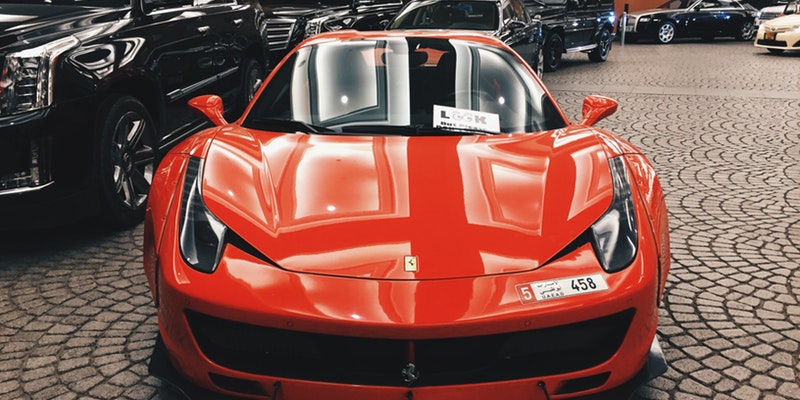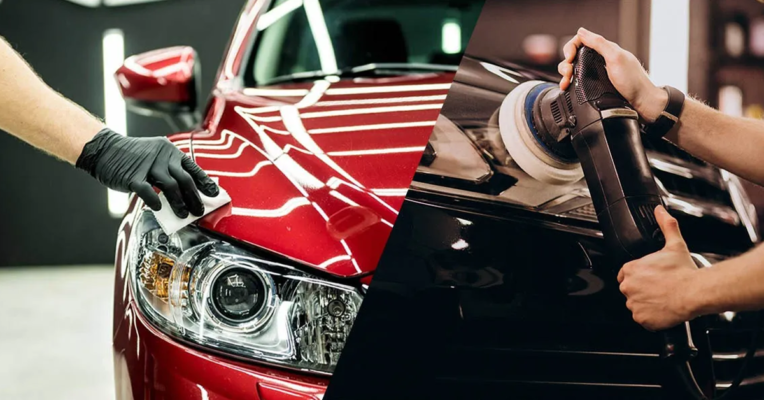Experience Ceramic Pro: Unmatched Security for Your Vehicle's Paint
Experience Ceramic Pro: Unmatched Security for Your Vehicle's Paint
Blog Article
The Science Behind Ceramic Coating: How It Improves Your Car's Visual and Durability

Comprehending Ceramic Covering Chemistry
The chemical composition of ceramic finishings plays a critical function in establishing their sturdiness and protective residential or commercial properties on vehicle surfaces. Ceramic coatings are normally composed of silicon dioxide (SiO2), which is a main part offering hardness and warm resistance. Other components such as titanium dioxide, silicon carbide, and polysilazanes are frequently included to boost specific homes like UV resistance, bond, and hydrophobicity.
Silicon carbide is understood for its abrasion resistance, making the ceramic finishing sturdy and tough versus physical damages. Polysilazanes are made use of to improve the layer's versatility and attachment to the automobile's surface, making sure lasting protection. Comprehending the chemistry behind ceramic layers is critical for both applicators and vehicle owners to value the worth and benefits these coatings use in maintaining the aesthetic appeal and longevity of vehicles.
Enhanced Gloss and Mirror-like Finish
Recognizing the chemical composition of ceramic coatings not only discloses their protective residential properties however likewise loses light on exactly how they add to attaining an improved gloss and mirror-like coating on car surface areas. The trick to the glossy effect hinges on the nano-ceramic bits existing in the finishing. These fragments complete tiny pores and imperfections externally, creating a smooth and degree coating. As light hits the layered surface, it reflects uniformly, giving the look of a deep, glossy sparkle. Furthermore, the chemical framework of ceramic finishings permits them to create a strong bond with the car's paintwork, stopping oxidation and maintaining the clarity of the finish gradually. This bond additionally resists environmental contaminants, such as dirt and crud, that can plain the shine of the vehicle. The mix of filling properties, light representation, and long-lasting security makes ceramic layers a preferred selection for those seeking a dynamic and mirror-like coating for their vehicles.

Influence On Paint Protection and Long Life
Ceramic layers for vehicles substantially boost the long life and security of the paintwork. By developing a chemically immune layer on top of the vehicle's clear layer, ceramic coatings function as a barrier versus different ecological pollutants that can harm the paint gradually. These finishings are made to push back dirt, water, roadway salt, bird droppings, and other hazardous substances, minimizing the risk of paint oxidation and rust. In addition, the firmness of ceramic layers gives a level of scrape resistance, aiding to keep more tips here the car's look for a prolonged period.
In regards to durability, ceramic finishings offer a long lasting service compared to conventional waxes or sealants. While waxes might last a few weeks to a couple of months, ceramic coverings can in 2014 with correct maintenance. This prolonged life expectancy not just minimizes the regularity of reapplications yet also conserves effort and time in the future. Generally, the protective buildings of ceramic coverings contribute significantly to preserving the automobile's paintwork and enhancing its aesthetic allure over a prolonged period.
Resistance to Impurities and Severe Elements
With the protective shield provided by ceramic finishes against numerous environmental pollutants and aspects, cars have the ability to keep their immaculate appearance despite direct exposure to harsh conditions. Ceramic layers produce a strong barrier that pushes back water, dust, dust, and various other typical pollutants, stopping them from bonding to the automobile's surface area. This hydrophobic nature not just makes cleaning easier yet additionally reduces the threat of water areas and etching created by acidic contaminants. In addition, the chemical resistance of ceramic coverings assists secure the paint from bird droppings, pest splatter, tree sap, and various other destructive materials that can damage the surface over time.
Furthermore, ceramic layers provide UV security, shielding the lorry's paint from the sun's dangerous rays that can trigger fading and oxidation. This resistance to UV damage aids maintain the color strength and luster of the paint for longer periods. By forming a resilient and durable barrier, ceramic coverings make sure that the vehicle's outside stays safeguarded versus a wide variety of pollutants and severe aspects, maintaining its aesthetic charm and durability.
Application Techniques and Upkeep Tips
For optimum results when using ceramic finishes to automobiles, making use of correct strategies and adhering to recommended upkeep methods are necessary. The application procedure of ceramic finish requires attention to detail and accuracy. Before applying the ceramic layer, it is critical to thoroughly clean and sanitize the automobile's surface area to ensure correct attachment. This entails cleaning, claying, and perhaps brightening the paint to develop a smooth canvas for the ceramic finishing to bond properly.
When using the ceramic finishing, it is advised to work in small sections to make certain also coverage and to protect against the item from drying also promptly. Using applicator pads or microfiber cloths, apply the finishing in a crisscross or up-and-down activity, depending upon the web link item's instructions. After the layer is used, allow it to heal for the specified time before pop over to these guys buffing off any kind of residue.
In terms of maintenance, normal cleaning with pH-neutral soaps and avoiding rough devices or harsh chemicals will certainly assist preserve the ceramic layer's integrity. Periodic evaluations for any damage or endure the coating can likewise help maintain its protective properties in time.

Conclusion
Finally, ceramic coating boosts a car's aesthetic allure and durability through its chemical composition, offering a glossy coating and protecting the paint from ecological contaminants. Its resistance to severe aspects and simplicity of maintenance make it a prominent choice for vehicle owners seeking to preserve the look of their automobiles. On the whole, ceramic finishing is a clinically backed option for preserving the look and longevity of your automobile.
Comprehending the chemistry behind ceramic layers is critical for both applicators and automobile owners to appreciate the worth and advantages these finishings offer in keeping the visual appeal and durability of lorries. (ceramic pro)
Recognizing the chemical structure of ceramic finishings not just reveals their protective homes yet also drops light on how they add to accomplishing an improved gloss and mirror-like surface on automobile surface areas. By developing a chemically resistant layer on top of the car's clear coat, ceramic layers act as an obstacle versus numerous ecological contaminants that can damage the paint over time. Generally, the safety residential or commercial properties of ceramic coverings add considerably to preserving the lorry's paintwork and enhancing its aesthetic appeal over an extensive duration.
In verdict, ceramic coating improves a lorry's aesthetic appeal and resilience with its chemical composition, providing a glossy finish and safeguarding the paint from ecological impurities.
Report this page